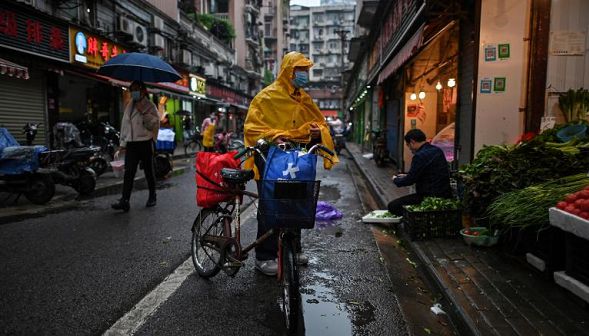
Wuhan is on a slow path back to normality after 76-day coronavirus lockdown
The first city in the world to go into lockdown due to the coronavirus is slowly returning to something that might be described as normal, after months of fear and anxiety.
But the scars of the viral outbreak which for 76 days shut down the Chinese city of Wuhan, and much of the surrounding Hubei province, lie just beneath the surface, with many citizens worried about a second outbreak and businesses still struggling to get back on their feet.
The first known cases of the virus were detected in Wuhan in mid-December. In the weeks that followed, case numbers spiked and from January 23 until April 8, residents were unable to leave the city as the Chinese government attempted to contain the outbreak.
But despite the attempts to halt the spread of the virus, it has now infected more than 2.6 million people worldwide.
In Wuhan though, the outbreak now appears to be largely under control, with no new cases or deaths reported in Hubei province as of the latest figures released Wednesday.
A man wearing a face mask arrives to buy vegetables at a stall in Wuhan in China's central Hubei province on April 18.
Streets that only a few weeks ago were cordoned off behind police checkpoints are now open to traffic, while some public spaces such as the Wuhan Zoo are preparing to allow people back inside.
But that doesn't mean people are letting their guard down or all the restrictions have lifted. Walking down the street, almost everyone continues to practice social distancing, keeping at least 1.5 meters (five feet) apart.
Many stores, including major chains such as Starbucks, have moved their goods and services out onto the sidewalk to avoid the need for customers to congregate inside.
Mr Xu, a local business owner, whose convenience store is set up across from a Wuhan convention center, said since he reopened in April there had been very few customers. "The situation now is not very optimistic. Even after businesses reopened, there are not many people. I'm a bit worried about this," he said.
"I don't know when (my business) can recover."
Slow recovery
To date, there have been 68,128 reported cases of the novel coronavirus in Hubei province, of which Wuhan is the capital, claiming the lives of 4,512 people.
A sprawling metropolis, Wuhan is one of China's largest industrial and transport hubs, located on the banks of the Yangtze River. It has long been considered the economic engine of the country's central heartland.
The decision on January 23 to effectively seal off the city, closing all transport links, was without precedent. Slowly the restrictions became more strict, eventually banning citizens from making any non-essential trips out of their apartments.
Checkpoints were set up across the city to stop people leaving their homes, apart from short trips for medicine and groceries.
Some of these conditions are now familiar to millions of people around the world who have since been requested, or ordered, to stay at home to help stop the spread of Covid-19.
But just as Wuhan's lockdown predicted the path for hundreds of cities around the world, its reopening also offers a window into the difficult path ahead.
In the first quarter of the year alone, Hubei's economy shrank by almost 40%, according to state-run news agency Xinhua.
Some stores are now open and people are returning to public places, with mask-wearing Wuhan residents taking to the city's parks to go for walks, play badminton and even get haircuts courtesy of outdoor barbers.
